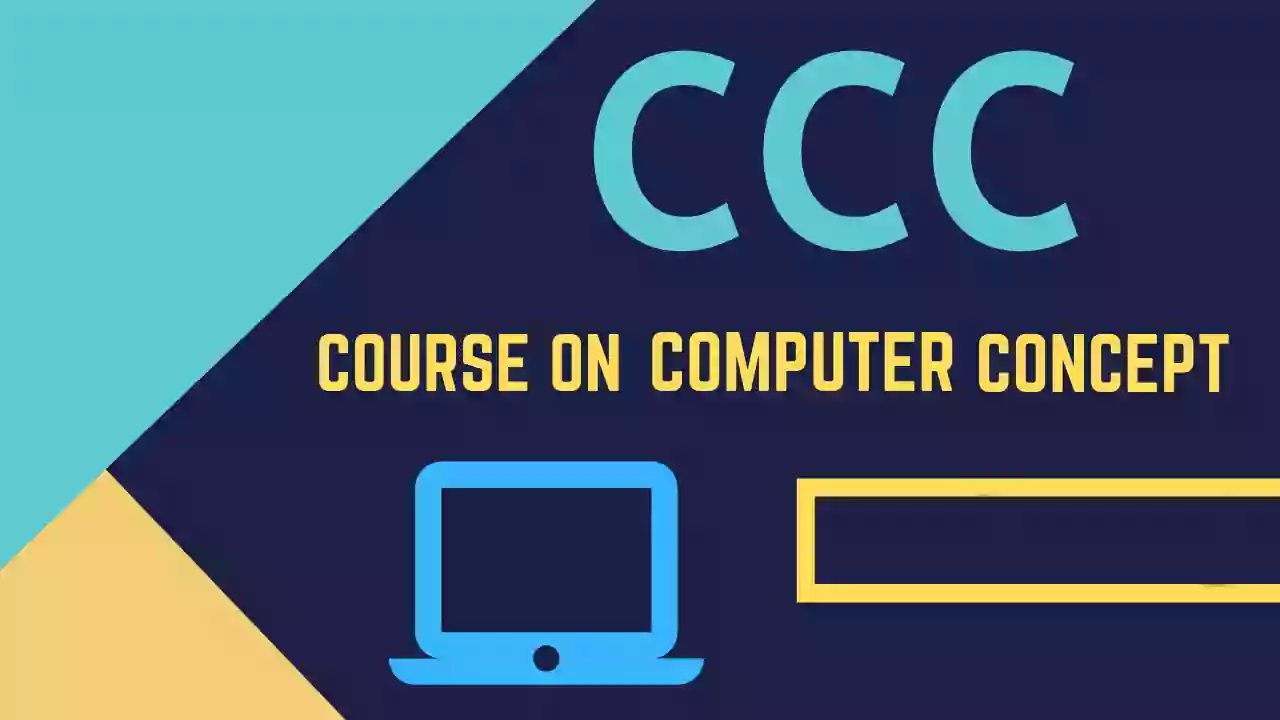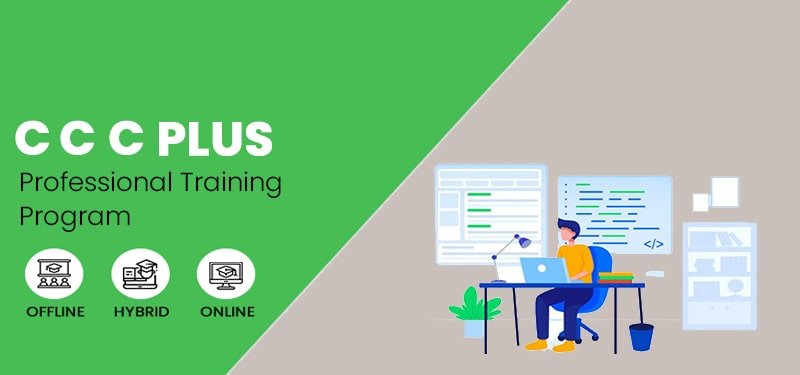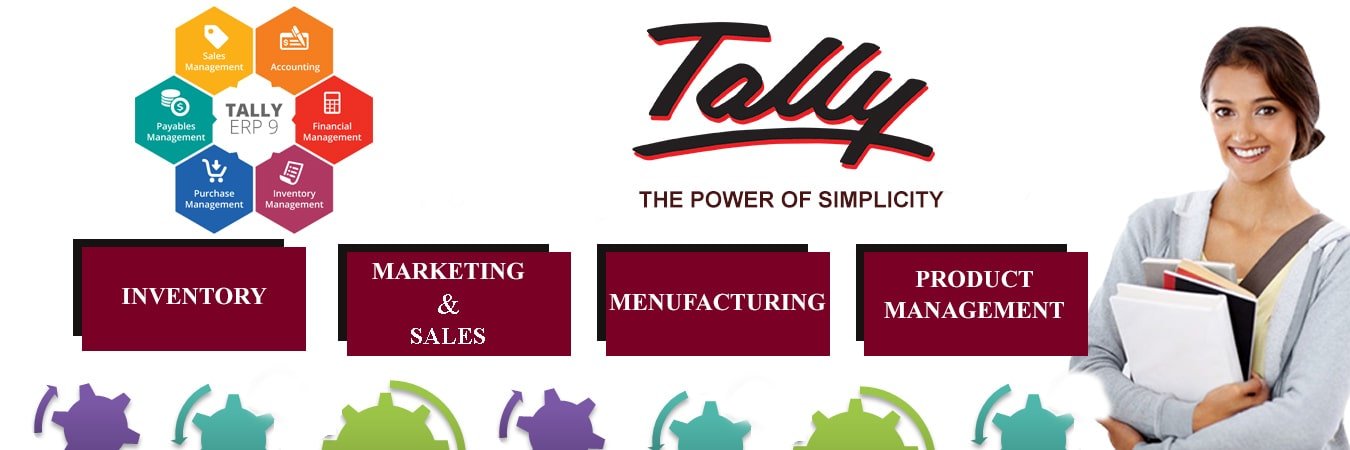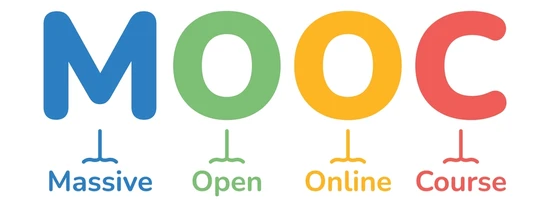
The Group of Parekh Colleges- Mahuva
(Affiliated To MKBU, GTU And Approved by AICTE)

The Group of Parekh College- Mahuva
(Affiliated To MKBU, GTU And Approved by AICTE) Refresher Course

Refresher training is an aspect of retraining taken by a person already qualified or previously assessed as competent in a field with the intention of updating skills and/or knowledge to a changed standard, or providing the opportunity to ensure that no important skills or knowledge have been lost due to lack of use. In industry it is also used to upgrade performance of personnel faced with workplace changes or who use obsolete, deprecated, or outdated work procedures, as a method for improving productivity, customer service, employee satisfaction and retention, and workplace health and safety.
❀ Training Methods
In the simplest case, the candidate will demonstrate skills in a real or simulated exercise, and may be required to also pass a written or oral examination. Where standards have changed it is likely that there will be a formal or informal intervention to present the updated information, demonstrate updated procedures and learn the details of new equipment, and an opportunity to discuss and practice skills before assessment.
Following refresher courses are provided by our college :
❃ Course on Computer Concepts (CCC) ❃

❀ Introduction:
This course is designed to aim at imparting a basic level IT Literacy programme for the common man. This programme has essentially been conceived with an idea of giving an opportunity to the common man to attain computer literacy thereby contributing to increased and speedy PC penetration in different walks of life. After completing the course the incumbent should be able to the use the computer for basic purposes of preparing his personnel/business letters, viewing information on internet (the web), receiving and sending mails, preparing his business presentations, preparing small databases etc. This helps the small business communities, housewives, etc. to maintain their small accounts using the computers and enjoy in the world of Information Technology. This course is, therefore, designed to be more practical oriented.
❀ Eligibility:
The candidates can appear in the NIELIT CCC Examination through following three modes and the eligibility criteria for each mode are indicated as below:
- ● Candidates sponsored by NIELIT approved Institutes permitted to conduct CCC Course - irrespective of any educational qualifications;
- ● Candidates sponsored by Government recognized Schools/Colleges having obtained an Unique Identity number from NIELIT for conducting CCC - irrespective of any educational qualifications;
- ● Direct Applicants (without essentially undergoing the Accredited Course or without being sponsored by a Govt. recognised School/College) -irrespective of any educational qualification;
❀ Duration:
The total duration of the course is 80 hours, consisting of:
| # | Courses | Duration |
|---|---|---|
| 1 | Theory | 25 hours |
| 2 | Tutorials | 5 hours |
| 3 | Practicals | 50 hours |
❀ Who can conduct the course:
The education and training for CCC shall be imparted at the institutions specifically authorized by NIELIT for conducting CCC. In addition, the students can study the course on self-learning mode and can apply as a direct candidate for appearing in the CCC examination conducted by NIELIT.
❀ Examination Fee:
The candidates can appear in the NIELIT CCC Examination through following three modes and the eligibility criteria for each mode are indicated as below:
- ● The examination fee for CCC is Rs.360/- (Rs. 340/- examination fee + Rs.20/- form processing charges) which is to be pay online through NEFT/RTGS/ CSC-SPV/ Online(Credit Card/Debit Card/Net Banking) while filling up the online examination form. The examination fee includes Service Tax as applicable.
- ● There is no Provision of Late Fee
❀ Syllabus:
Click To View Syllabus Of CCC
❀ CCC Examination details:
1) Online Exam Application Form:
Candidate has to apply online for CCC examination through link student.nielit.gov.in
2) Admit Card:
To download the admit card candidate has to visit the link student.nielit.gov.in
3) Result:
To download the Result candidate has to visit the link student.nielit.gov.in
4) Download Digitally signed certificates:
To download the certificate candidate has to visit the link http://www.nielit.gov.in/certificate/
❃ Course On Computer Concepts Plus (CCC PLUS) ❃

❀ Objective:
The course is a certificate level course, with an aim to equip the workforce entering into / working in government sector with the vital skill set, that is, necessary to cope up with the ever-changing scenario in IT sphere. The course is designed in such a manner, so that, it not only educate an individual with the basic skill set but also enhances the ability of individual to easily grasp the new changes in the dynamic IT field. The course is aimed at skill development in masses, students, employees in professional sectors at middle level. The course may also be considered as an ideal course for re-skilling of an individual and technological advancement. After going through the course, an individual is expected to be equipped with not only the office automation skills but also with the understanding of the latest technologies and e-Gov applications.
The module on financial literacy will enable the individuals to understand the various financial services and be aware of the various schemes of Government of India.
❀ Eligibility:
10 Th Pass
❀ Duration:
126 Hours. (21 days @ 6 hours/day – Full Time or 42 Days @ 3 hours/day – Part Time)
❃ Tally Course ❃

❀ What is Tally Course ?
Tally is an accounting software that is very much useful in making calculations in small and mid-level businesses. It usually stands for Transactions Allowed in a Linear Line Yards. You can do all the Banking, Auditing and Accounting Works using this software. Tally’s accounting features permit you to record business transactions instantly and easily. Record transactions necessary for your business by creating and maintaining vouchers, masters and generating reports. It helps you manage all the major accounting operations in your business.
❀ Tally Course Details
| Course | Tally |
|---|---|
| Full form | Transactions Allowed in a Linear Line Yards |
| Tally Course Eligibility & Requirement | 10+2 or equivalent |
| Duration | 3 Months |
| Fee Offered | Rs.3,000 to Rs.6,00 |
| Course Type | Regular mode |
| Starting salary offered | Rs. 12,000 to 15,000 per month |
| Advance Courses | Diploma in Tally |
| Employment opportunities | Banking Sector, MNC Companies. |
❀ Eligibility Criteria For Tally
- ● Candidate must complete 10+2 equivalent with required aggregate from a recognized college.
- ● Should have basic knowledge of Business Management.
- ● Students who want to undergo Tally Accounting Course after graduation should hail from a commerce background.
❀ Tally Course Fees
Tally Course Fee is low for the basic course it is 4,000 around and for the advance course, it is 8,000. Thus, students who wish to join the Tally Computer Course can join easily.
❀ Tally Course Duration
Tally ERP Course can be learned within 2 months. In the first month, you will have a basic understanding and in the second month, you will have a bit advanced concepts like GST, TDS, Service Tax Payroll, etc.
❀ Core Features of Tally Course Syllabus
1) Accounting
It is the most important feature of Tally ERP. the very first thing that comes to anyone’s mind after listening about Tally is Accounting.
2) Billing
Billing is a significant part of any business. As and when you pass an accounting entry synchronously a bill is generated which you can use for raising or sending an invoice. Most people believe that Billing is a part of Accounting which is not true when it comes to business. Billing Option present in Tally eliminates the task of entering separate accounting.
3) Payroll
This feature can be used when you have a good number of employees. To maintain Payroll in Tally, functions such as employee groups, employee categories, pay heads, attendance, and course employees are used.
4) Banking
In this era of digitalization, no business can survive without Banking. With the help of Tally ERP, TDS GST both direct and indirect tax can be calculated automatically and its returns will be also be filed online.
5) Taxation
For any business to survive it shouldn't operate in isolation. The Business should work in cooperation with State as well as Central Government by paying appropriate Taxes. Calculation of Taxes based on the income, sale, and dispatch is quite hectic. Tally makes it easy for you to prepare any bill or invoice as it can give VAT, Income Tax, Excise, Customs, Service tax, etc.
6) Inventory
Maintenance of Stock is of utmost importance for any business. It's vital as it gives better control over business sales. Thus, the movement of stock is an integral part that can be kept in control.
❀ Concepts or Modules in Tally
- ● Fundamentals of accounting
- ● Introduction of Tally.
- ● Meaning of company creation and opening accounting in Tally.
- ● Opening a ledger account and how to create a voucher.
- ● How to modify a company or industry detail.
- ● How to set the features of a company.
- ● Selecting the cost category and cost center.
- ● How to create a godown and how to maintain an inventory.
- ● How to set price list and the budget.
- ● A brief introduction of F11 and F12.
- ● How to produce profit and loss balance sheet from accounting.
- ● Introduction to VAT.
- ● Calculation of VAT.
- ● Introduction to TDS.
- ● Calculation of TDS.
- ● How to add excise duty and customs duty.
❀ Job Opportunities and Career Prospects
- ● Accountant
- ● Accounts Executive
- ● Tally Operator
- ● Tally Accounts Manager
- ● Service Coordinate with Tally
- ● Tally Junior Accountant
- ● Tax Accountant
- ● Accounting Assistant
- ● Supervisory Accountant
❀ Salary/Wages offered to Tally Certificate Holder
Average Salary for Tally Certificate Course can be ranging from 2 – 10 Lakhs. This can vary depending on the experience and several other factors.
❀ FAQs on Tally Course?
1) What is a Tally Course?
Tally is an accounting software that is very much useful in making calculations in small and mid-level businesses. You can do all the Banking, Auditing and Accounting Works using this software.
2) What is the full form of Tally?
Tally Stands for Transactions Allowed in a Linear Line Yards.
3) Is Tally hard to learn?
No, it is very easy to learn if you are from the commerce stream. It’s easy if you are from a non-commerce stream too and all that depends is your interest to learn.
4) What is duration of Tally Course?
Tally can be completed within a span of 2 months usually. However, it even varies from institute to institute.
5) Is Tally a Good Course?
Yes, it is a good course and is the most widely used software in today’s business world.
❃ MOOC ❃

❀ What Is a Massive Open Online Course (MOOC)?
A massive open online course (MOOC) is a typically free web-based distance learning program that's designed for large numbers of geographically dispersed students.
A MOOC might be patterned on a college or university course, or it can be less structured. Although they don't always offer academic credits, these courses often offer a certification, enhance employment opportunities or further studies. Typically, MOOCs are used for higher education, upskilling and career advancement.
❀ How Do MOOCs Work ?
MOOCs are online learning courses that a student accesses through the internet. Typically, these courses use cloud computing platforms for course delivery. The course content is created with course authoring tools and is subsequently hosted on a learning management systems (LMS) platform.
The course provider, which is often a university, supplies the course materials and instructors. The LMS platform, such as EdX, Canvas, Coursera or Udacity, provides the technological infrastructure for course modules, user access and other learning resources.
MOOCs consist of traditional class materials and can include the following:
MOOCs consist of traditional class materials and can include the following:
- ● Filmed or recorded video lectures.
- ● Assessments.
- ● Readings.
- ● Problem sets.
- ● Online quizzes and examinations.
- ● Interactive learning modules.
- ● Interaction with other students via discussion forums.
The course materials typically consist of prerecorded short video lectures that usually range from five to 20 minutes.
❀ History of MOOCs
MOOC -- which rhymes with kook -- was coined in 2008 by Dave Cormier of the University of Prince Edward Island in Canada for an online course offered by the University of Manitoba. There were 25 tuition-paying students from the university and 2,300 nonpaying students from the general public who took the course "Connectivism and Connective Knowledge" online. There were RSS feeds for material, and participation was facilitated through a variety of venues, including the Moodle LMS, blog posts, the Second Life online virtual world and real-time online meetings.
In 2011, Massachusetts Institute of Technology (MIT) OpenCourseWare became the first large collection of MOOC resources made available by a university. In 2012, MIT and Harvard University spearheaded the EdX initiative for the promotion of MOOCs.
As the demand for technology jobs increases, so does the popularity of online courses. As a result of the COVID-19 pandemic, MOOCs are becoming the new standard of education and specialization at all levels -- from elementary education through bachelor's and master's degree programs -- as part of remote learning plans. Enrollment in MOOCs surged during the pandemic, and many new MOOCs have been launched since then.
In 2011, Massachusetts Institute of Technology (MIT) OpenCourseWare became the first large collection of MOOC resources made available by a university. In 2012, MIT and Harvard University spearheaded the EdX initiative for the promotion of MOOCs.
As the demand for technology jobs increases, so does the popularity of online courses. As a result of the COVID-19 pandemic, MOOCs are becoming the new standard of education and specialization at all levels -- from elementary education through bachelor's and master's degree programs -- as part of remote learning plans. Enrollment in MOOCs surged during the pandemic, and many new MOOCs have been launched since then.
❀ What to consider before taking a MOOC
1) Define the purpose:
Before picking a specific MOOC, it's important to clarify the reason for taking the course. For example, is the person hoping to switch careers, improve job prospects, be promoted or learn new skills?
2) Select the course:
Spend time thinking about which course to select. This process can be accomplished by perusing different courses on the desired topic and assessing the course content and necessary prerequisites to ensure they're in line with the intended objectives.
3) Evaluate the time commitment:
The individual should evaluate how much time they can realistically dedicate to the course every week. Since MOOCs can vary from a few hours per week to more intensive commitments, it's important to select a course that accommodates the schedule.
4) Determine the course level:
The individual should determine whether they're seeking an introductory, intermediate or advanced course. They should evaluate their current knowledge and skills in the subject area to ensure they choose a course that corresponds with their proficiency level.
5) Research course reviews and feedback:
The individual should search for reviews or feedback from past students who have completed the course. This can offer insights into the quality of the course, the effectiveness of the instructor and the overall learning experience.
❀ Finding MOOCs
Providers of MOOCs are mostly universities but can also be corporate entities. Top universities and educational institutions, such as Harvard, MIT and Stanford, are leading MOOC providers. Corporations such as Microsoft and Accenture also provide publicly available online courses.
Popular MOOC hosting platforms and websites include the following:
Popular MOOC hosting platforms and websites include the following:
1) EdX:
EdX offers courses on a range of subjects from prestigious universities and institutions worldwide.
2) Coursera:
Coursera partners with universities and organizations, and most of their courses are taught by professors from well-known universities.
3) Udacity:
Udacity offers niche courses in technology-related fields, such as programming, data science and artificial intelligence. It provides both paid and free courses, and some nanodegree programs are also available for individuals who desire more in-depth study.
4) Future Learn:
Future Learn offers courses from universities and institutions around the world. It encompasses a broad spectrum of subjects, including but not limited to business, healthcare and social sciences.
❀ MOOC costs, enrollment and pacing
1) Cost:
Costs can range significantly both in price and structure. Many MOOCs are completely free, whereas online degree programs that contain a bundle of courses can cost tens of thousands of dollars. Some MOOC platforms also provide students with the option to apply for financial aid or scholarships.
2) Enrollment:
This generally varies by the type of course or program. For example, courses that aren't for university credit are typically available to the general public. Enrollment for online degree programs, however, often requires students to go through a traditional admissions process.
3) Pacing :
Courses offered for university credit and as part of online degrees generally follow a traditional semester schedule, while certification MOOCs can be self-paced or follow an abridged schedule, sometimes only taking eight weeks to complete. Courses that require live attendance and adherence to a course schedule are called synchronous courses, whereas flexible, self-paced courses are called asynchronous courses.
❀ Credentials and MOOC-based degrees
1) Free:
These courses are completely free but usually only for audit. However, students still have the option to pay for an official certificate of completion at the end of the course.
2) Microcredential:
Microcredential programs typically consist of three to six courses. Typically, these series of courses are narrow in focus and provide a specific skill or competency. The pricing for microcourses depends on the complexity and category of the course. These courses aren't intended to replace traditional college degrees, but are typically used for providing low-cost, on-the-job skills upgrades.
3) University credit:
Courses in this tier are university-accredited and comparable to online courses at institutions that provide degrees. Individual courses at this level can range from a few hundred dollars to a few thousand dollars
4) Online degree:
Online degree programs are equivalent to master's or continuing education degree programs at universities and offer comparable volume and depth of coursework. Online degree programs generally follow a traditional application and admissions process and range from a few thousand dollars to tens of thousands of dollars
5) Corporate training:
Corporate training MOOCs are deployed on an enterprise level. This pricing option is typically structured as a per-user cost for access.
❀ Benefits of MOOCs
1) No dependence on a physical location:
This can improve collaboration efforts and save time by eliminating a student's commute. Online education also enables social distancing.
2) Improved access to higher education:
Not only is this a function of convenience, but access to high-quality education in developing countries can ultimately increase quality of life and contribute to sustainable professional development efforts by providing a high-quality, accessible learning infrastructure.
3) Affordability of higher education:
Scalability makes these types of courses more cost-effective than in-person courses of comparable scope.
4) Flexible learning schedule:
Many courses are self-paced, which can accommodate student work schedules. Even if course completion isn't self-paced, as with online degree programs, prerecorded lectures can offer more flexibility on a daily and weekly basis.
5) Collaboration opportunities:
MOOCs frequently feature a broad and diverse community of learners from across the globe, which facilitates networking, collaboration and the sharing of ideas with peers who have similar interests and objectives.
6) Preview of college-level courses:
Before fully committing to a degree program, learners can use MOOCs to get a taste of college-level courses and improve their comprehension of the subjects.
7) Easy performance evaluation and monitoring:
Online courses provide an easy and automated way to monitor student performance and scores because all the data is captured through the entirety of the course.
❀ Drawbacks of MOOCs
1) No structure:
Flexibility can make the course more difficult to manage, as some students require the structure of in-person learning.
2) Level of commitment.:
Some students might not feel as committed to attending a free online course as they would an in-person course that requires them to pay tuition.
3) Inaccessibility of instructors:
Because most instructors are online, they don't have a physical office, making them less accessible.
4) Digital literacy required for effective use:
Learners must be able to effectively communicate across digital platforms.
5) Fewer opportunities for networking:
Students are less likely to form relationships with instructors and other students.
6) Limited accommodation for disabilities:
Students with visual or auditory disabilities might not be accommodated.
7) Lack of reliable internet connections:
Courses require strong internet connections, which can be an issue in developing countries and underprivileged communities.
8) Too many choices:
When searching for the right course, large amounts of similar courses for saturated areas, such as computer science, can hinder the decision-making process for students.
❀ Popular MOOCs
Thousands of MOOCs are available online, but many are offered on popular platforms and by institutions that have invested in making their courses accessible online.
The following are several popular professional education MOOCs by subject:
The following are several popular professional education MOOCs by subject:
- ● Top online courses for cybersecurity.
- ● Online courses and certifications for digital transformation.
- ● Top online internet of things courses.
- ● Top certifications and courses for project management.
The following are several of the most popular courses across all MOOCs:
- ● "Introduction to Computer Science" from Harvard University.
- ● "The Science of Well-Being" from Yale University.
- ● "Programming for Everybody (Getting Started with Python)" from the University of Michigan.
- ● "English for Career Development" from the University of Pennsylvania.
- ● "Machine Learning" from Stanford University.
- ● "Cryptography I" from Stanford University
- ● "Foundations: Data, Data, Everywhere" from Google.
❀ Example MOOC course structure
MOOC courses typically follow a general structure. Though the coursework and progression are the same as with regular in-person classes, courses are typically organized into modules. A module contains a lesson or unit for a class. Each module typically includes a combination of lectures, readings, interactive graphics and diagrams, problem sets and a quiz or test at the end. A typical module might include a course syllabus, assigned readings, video lectures, a problem set and a quiz that's automatically graded once it's submitted.
Module length and depth vary by course. Some courses require a larger time commitment per week and move through a large amount of content at a fast pace. Others only require a few hours a week and are more self-paced.
Module length and depth vary by course. Some courses require a larger time commitment per week and move through a large amount of content at a fast pace. Others only require a few hours a week and are more self-paced.
 shreebalvantparekhedutrust@gmail.com |
shreebalvantparekhedutrust@gmail.com |  2844228332 |
2844228332 |  Login
Login